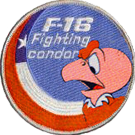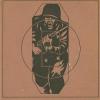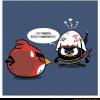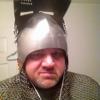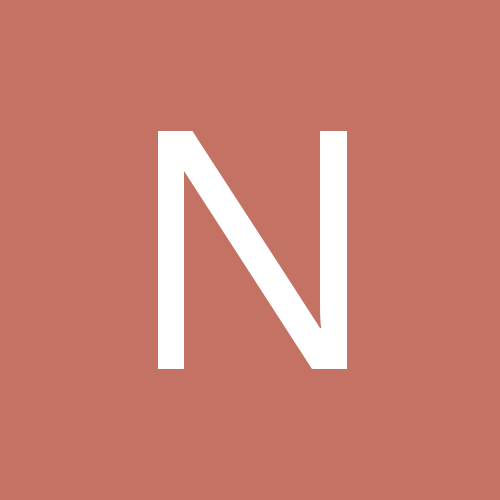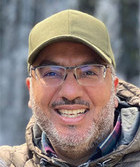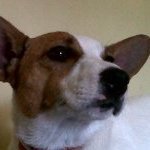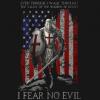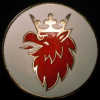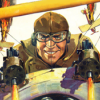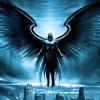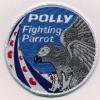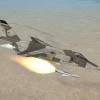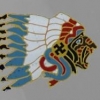Leaderboard
Popular Content
Showing most liked content on 03/15/2019 in Posts
-
5 points
-
4 pointsI used to live the next town over. I had friends and family that worked at Sikorsky.every time i drove by you would see something cool out in the yard . funny thing is years latter i moved upstate and used to commute past Kaman helicopters too.
-
4 points15 March 1967. The first Sikorsky HH-53B 66-14428 made its maiden flight at Stratford, Connecticut.
-
4 pointsFirst night of the war ft. Stary's NVG fx Been using ReShade for my standard postprocessing so I leave the NVG effect in the folder and switch my effects to unlimited only when I know there's a night mission. Works like a charm and one of the most immersive experiences I've had in SF2.
-
3 points
-
3 points
-
3 points
-
3 points
-
2 pointsLife before Combat Mission, Graviteam Tactics and Wargame: European Escalation (to name just a few) We really are spoiled, these days. In whatever fashion, in whatever period or part of the world and with whatever weapons we like to create virtual mayhem, there's at least one combat simulation product for us. I like aircraft and tank combat sims, primarily. I'm not a fan of so-called Real Time Strategy games and have only ever bought a few PC wargames - those from the second two titles in the title, if you get my meaning. RTS I don't like mainly because of the pervasive God view and the small scale. The wargames I like much better; although I dislike those ones that simulate wargaming, rather than war. Which brings me to the subject of this piece, not so much a mission report but a bit of admittedly self-indulgent reminiscing about two battles fought with 1/300 'micro armour' on the desk of a former home on summer days long gone now, what seems a lifetime ago. Wargaming I dabbled with most of my adolescent life. In sixth form, I was part of a foursome (yes John H, John W and Mervyn, if any of you are reading this) who arranged to fight an imaginary world war, in a world of our own devising where we each ruled an island country. This was based mainly on rules designed for naval warfare, from this schoolmate's 1960s book (which I stumbled across and picked up a couple of years ago in an Oxfam second hand bookshop): World War 2 was our chosen period. I obtained some Tri-ang Minic diecast warships and made some flat balsa representational hulls to flesh out my fleet. I think I still have a school jotter filled with the movement, spotting, gunnery and damage tables I laboriously copied from the book. Sadly, we never got around to playing the wargame - not the last time such an enterprise foundered, as it happened. One conclusion I quickly reached - this would be about 1970 - was that the ideal was a wargame with what would today be called an artificial intelligence foe. One you could play against entirely in your own time, without reliance on anyone else. Fast forward to the 1980s. Another joint enterprise wargame with a work colleague (Ray) had fallen flat. This was to have been Ardennes 1944 and I acquired quite a set of 1/76 kits to represent a Panther tank company (improved Matchbox models, mainly) with various supporting weapons and a Panzergrenadier company in Sdkfz 251 half-tracks made from card. The latter were based on cut-out 1/144 scale precoloured card models bought and built en masse for an earlier 'dabble'. I still have a box jammed full of the 1/72 stuff. I converted some models for my work colleague enemy, including a pair of M18 Hellcats from Matchbox M24 Chaffees, whose fate is unknown. The failure of this not inconsiderable effort finally convinced me that I was right to have doubts about 1/76 being too big a scale for a decent company-sized wargame. And again, that the ideal was a non-human opponent, at my beck and call. Fast forward a bit more to the early 1990s and the interest arose again. This time, I wanted to fight the Cold War and quickly settled on 1/300 as the scale for miniatures (card or board wargames never crossed my mind - sorry, Avalon Hill). This was a scale I had dabbled with in my schooldays, having discovered a unique shop, Model Figures and Hobbies, who sold me a set of rules and a small selection of WW2 cast metal tanks - all of which I still have. Suitable rules were again sought. I discounted the Challenger set as too complex, with their long multi-part movement and firing sequences. Instead, I went for the Wargames Research Group's rules. At the time, the WRG had recently revised their WW2 set to operate much less like a chess game wit tank models, and much more like an exercise in the sort of command and control I had become acquainted with in my days as a part-time Army Officer. Here was a wargame which simulated war, not wargaming! Their cold war era rules had not been so updated, but I decided to use the WW2 rules with appropriate elements - like vehicle and weapon characteristics - from the WRG's modern ones (which were later updated, but too late for me) A Challenger -based set of Modern Army Lists, and other sources, provided suitable details on unit composition. My 'procurement department' also sought out suitable suppliers of weapons. I wanted current Warsaw Pact (Soviet, basically) versus current US or British Army. That meant about a battalion-sized force for the former, as attackers, and a company group for each of the latter, as defenders. For the Soviets, I decided to go for T72s, with BMPs (rather than wheeled BTRs) for the Motor Rifle people. These were the days when it was only just becoming clear what the difference was between the T-64, T-72 and T-80 let alone variants thereof. I started with 1/300 T72s from Davco but even tidied up, these were a bit crude. The 1/285 models from US maker GHQ were vastly better but to costly for my desired force sizes, so I opted for the nearly-as-good 1/300 (actually nearer 1/285) T72M1 from Scottish maker Scotia Micro Models, whom I was pleased to find are very much still in business. My BMPs ended up as a company of Davco BMP-1s (sold as BMP-2s, but actually more like BMP1s with a tube-mounted Spandrel ATGW atop the small turret instead of a Sagger on the gun tube) and two companies of more realistic Scotia BMP-2s. I modified the Davco BMPs to BMP-1 standard by cutting off the Spandrels and reducing the gun barrel length. For NATO, I obtained a tank squadron/company of M60A3s and M113s for the US Army, and the same again in Chieftains and FV432 APCs for the British. The US models were all Skytrex, the lBritish Davco Chieftains with the rest mostly Skytrex, the latter's 432s in particular being fine castings, available with different exhaust systems and with or without the Peak GPMG or 30mm Rarden turrets, plus variants like mortar and ATGW carriers. Both sides were filled out with a battery or more of SP artillery, mainly SO-122s with some SO-152s for the Soviets and M109A1s for NATO. Support vehicles included some soft-skins ranging from Hummers, UAZ 469 jeeps and Landrovers to trucks like Urals and Bedford 4-toners, and armoured vehicles like M901 TOW ATGW launchers, M163 SP Vulcans and ZSU 23-4 Shilkas for air defence, plus MTLBs and the like. This was topped off by some specialised stuff like a tank-based bridgelayer for each side and even an odd Soviet BTM fulyl-tracked trench digger. The variety of vehicles available was, and possibly still is, huge, and enables quite impressive and realistic units to be built up at reasonable cost. I added a platoon of Leopard 1A4s which, when paired with the M113s, meant I could have a Canadian Army company combat team. The inspiration for that was this excellent book by ex-tankie Kenneth Macksey, which started life as a training publication apparently, to put the real training into a dramatic context for officers and NCOs - essential reading and a lot more realistic than 'Team Yankee', IMHO: A platoon of M1 Abrams and a troop of Challengers, plus some Bradley IFVs, provided the ability to get some variation in their respective sides. Cast 1/300 figures for each army were painted up and glued on tiny green flock-covered based three or four at a time to simulate fire teams. Sut off at the waist, and wth a trench of plasticine, produced dug in variants, including platoon anti-tank weapons. For a battlefield, I decided to 'go desktop'. In those days, that meant a real desk, of course. This in turn meant a considerably-reduced ground scale, although I stuck with 'one miniature = one vehicle' - hence somewhat condensed formations, to put it mildly. Later, a bigger desk eased this effect a little. Everything had to be capable of being rolled out and packed away after a day or to, not left in situ. So I ended up using a model railway grass mat as a base - basically, a large, rolled-up brown paper sheet with green flock stuck to one side. Hills were formed by making lots of contour shapes cut from cheap black vinyl floor tiles, then sticking grass mat pieces to tops, folded around their sides. Laid on top of one another in variable configurations, this enabled limited hills to be formed. Their steps didn't look too bad and enabled easy calculation of when a tank was hull down. Woods were formed by grassmat-covered plasticard hexes onto which lichen 'trees' were glued. Like the hill contour sections, these could be put together in various ways to give different layouts. Buildings came from a cheap but effective range of cut-out coloured card building kits specially designed for NW Europe in that scale. These came with bases on which was a destroyed version of the building, with the remains of its walls. Onto this, the assembled building was pushed. I ended up mounting many of these on bigger bases, made up to simulate their gardens. Hedges were made from green-painted pipecleaners. These started freestanding, but I ended up making separate fields - plasticard sheet topped with grassmat dabbed with brown or sand to make them stand out from pure grassland, and edged with the pipecleaner hedges. The lichen tree hexagons were supplemented by conifers made for model railways, cut down as needed. Roads started as strips of black Velcro which adhered lightly when set on grassmat, but ended up as grey-painted card with some Velcro below. Smokescreens were made in a fan-shape sized to match the specification in the rules. These consisted of cotton wool stuck to transparent wedges of polythene, which followed contours reasonably well when laid out. Cotton wool blobs painted orange at their base and dark grey above provided knocked out vehicle markers, and something similar for artillery strike markers. I also made some Hinds, MiG-27s and Apaches as plasticard 'flats', mounted on fusewire bases of various heights. For the AI enemy, I got a copy of this WRG book: This got me so far, but was still the main inspiration for a home made system for an AI opponent. This system involved drawing a playing card (the system behind the Sea Battles book) and looking that up in a table, every time my advancing (usually, Red Army) battalion group's point force - perhaps led by BRDMs or BMP-Rs - got within a given weapon range of a feature which could be a possible dedender's location - for example a copse, a village, or a hill feature. The table when consulted listed the defending units to be placed there, according to further card draws. The process started when my troops got within ATGW range (the longest for direct fire weapons) and if no ATGWs were drawn, repeated when within tank gun range and so on down to small arms range. You might end up with nothing, or a complete all-arms force, on any given position. After that, fixed rules with a dice throw determined the enemy action. That sort of thing. Not as complicated as it may sound, and imperfect, but playable. These first pics are from a battle on my first, very small desk, with early terrain models. The first, blurry pic, like all the others which follows, was likely taken with a Praktica BX20 35mm SLR with a 35-70 zoom. Note the early, pipecleaner hedgerows without field bases, the hex-based trees, the card buildings and the contour hills. As far as the action is concerned, a platoon of hull-down Skytrex M60A3s has been knocked out towards the bottom left. Bottom centre, a Scotia T-72 platoon is followed by a BMP as it heads into the village. Hard to see what the other vehicles are in this pic, but on the centre right, many are burning. This closer view focuses (depth of field permitting!) on the T-72 left plank platoon. To its right, another T72 platoon, less one tank, presses on past knocked out M113s and M901s. Just ahead of the Soviets are some entrenched US Army infantry, by a road. It's hard to make out what's happening on my (Soviet) right flank but it looks like we are pressing ahead amidst a litter of knocked-out AFVs (the rolled-over M113s signify I had run out of KO'ed vehicle markers!). Top left edge are some M125 (M113-based) SP 81mm mortars and to their right, an M577 armoured command vehicle, all of which are about to hit serious trouble, unless they bug out. This is the view from behind and above the burning M60A3s. To their left on the ridgeline looks to be an M901 ITV, near those conifers. There's an M163 tracked Vulcan next to the two M125s. The BMPs are the Davco inaccurate BMP-2s modified by me to BMP-1 standard. Can't recall how that battle turned out, but I think it's safe to say the Red Army of Peasants and Workers came out on top! A little latter, and the desk is bigger. The hedges are now mostly mounted on pre-made fields, the roads are still Velcro and the Davco BMP-1s have mostly been replaced by Scotia BMP-2s. In the foreground, there's a forward observer for the guns in an MTLB-U in the lee of a house; with him is a field ambulance (!) and a couple of Ural or GAZ trucks. Centre right, a 4-tank T-72 platoon leads a BMP-2 company in the advance to contact. To their right, in the Soviet centre, a similar force has crested a hill and is about to enter a built-up area. The forward observer has called in smoke screens to hide the attacking force from likely enemy positions on the higher ground on the far side of the village. To this will soon be added a barrage from the SO-122 SP howitzers, in close support as per Soviet practice, and just visible on the centre right edge of this picture. A pair of MiG-27s flash overhead, more for effect than anything else. This is the view from the other side of the battlefield, a little later. Some BRDM-2 armoured cars watch my open flank from behind a hedgerow. The T-72s have halted to shoot the BMPs onto the ridgeline objective, onto which artillery fire is now falling. The defenders have been seen to comprise dug-in infantry and their M113 APCs. supported by M60A3s. And we're back to the other flank for this last shot. It was possible to get decent results with a bit of weathering and highlighting on these little models. I remember the Scotia T-72s had rather flat turrets so I raised these a bit with a small disc of plasticard underneath. A little bit of filing and sanding tidied up side skirts so the end result was nearly as good as the pricier GHQ models, the few I had of these being reserved for battalion commanders - rank having its privileges, as they say. All of this stuff, and my very first WW2 micro-armour from the late 1960s, still resides in a box in my loft. Will it ever again see action? Possibly not. But it does have the considerable attraction of being tactile in a way a PC game will never be. And it can reproduce the battles, time periods and armies I choose, not those chosen for me by PC game designers. Wargaming with miniatures is enjoying something of a resurgence, although the preferred scale seems to be closer to 1/72 (which models I also still have from my last outing!), though now in resin or plastic. The resulting small-scale section or platoon-level actions appeal less to me than the battalion to company sized ones possible with 1/300 (even if at the cost of compression from a smaller ground scale). So perhaps, one day, a room at home will reverberate to the imaginary din of a desk or table top battle!
-
2 points
-
2 pointsBAC Lightning F.51 - 'Acro Blixt' Display Team, Flygvapnet, 1967
-
2 pointsBAC Lightning F.3S - F10 Svenska Flygvapnet, 1970
-
2 points
-
2 points
-
2 points
-
2 points308; what terrain is that? And now for an obligatory screenshot, sponsored by GKABS: https://gkabs.net/index.php/download-files/ Your papers, please.....
-
1 pointPolovski from simhq post: Here are some future fixes, improvements and new features currently being tested. It will be released sometime in the future, in the next patch or quite possibly in the next addon (we will decide).. (some will please 77_Scout). 1) QC - Fixed an issue with the mouse pointer mode over the enemy skin selection pulldown menu 2) QC - Player position in flight now has two modes - based on workshop selection - by Rank and Always Leads 3) Campaign Dialogue interface imagery now looks neater with the scrollable outcomes window 4) Fixed an issue with the AI Balloon kill reporting (it was reported on number of Airkills instead of Balloon kills) 5) Because the Player can in some instances no longer issue attack commands in QC (as he is not leader) the AI now carry out the QC Mission Objectives automatically. 6) A limit of a maximum of two aircraft will attack the same target (Ground or Air). 7) Revised LePrieur Rocket effects. 8) Improved AI Balloon Attack capabilities. 9) Improved Searchlight function. 10) Fixed an issue in QC where bombers would only bomb if player selected the default campaign Bombing Payload (Payloadnum = 1)) - Now selection of any payload with bombs instructs the AI to Bomb (Friendly or Enemy) 11) Gothas will now use more bombs on each bombing pass (was single drops) 12) Corrected the aircraft database: changed the BE2c HD version to correctly reflect that it has a fixed gun. 13) Fixed an issue whereby A-Flight when assisting would sometimes be directed to attack the Target irrespective of what the mission directive was or whether the Target was friendly or not (AI will never attack friendly targets so they simply ignored the mission directive). 14) Players flying Gothas will now only attack England on the correct historical dates. 15) Implemented Aircraft startup sounds for all AI aircraft at code level and with 21 associated unique engine startup sounds matching the aircraft engine types. 16) Headshake can now be controlled via workshops - severity and on/off. 17) Implemented latest shader version. 18) Incorporated some extra scenario missions for Britain and Germany 19) Aircraft can now navigate tighter and closer mission waypoints. 20) Increased Morale of QC AI pilots (Skill dependant) 21) Revised Fight V Flight tactical decision making. 22) Revised Squadron base morale settings. 23) Fighters should now engage more frequently. 24) Change QC Fighters to Target Ground 'Structures' when directed to attack Ground Installations to ensure they attack targets of significance. 25) Revised some sounds volumes. 26) RAF BE2 and BE12 series aircraft cooper bomb loadouts reduced to 4 (was 8) 27) Observer allocated to player upon enlistment is no longer always the first Observer - an Observer is now randomly allocated. 28) Observers are now randomly allocated to AI flight members - the Player is allocated the same Observer unless he is killed or not in service. 29) Form up at action directives is no longer circular - the aircraft will form up in transit to next waypoint. Note: form up at non action directives or after action whilst in transit may still be circular! 30) Reduced kills and flying hours of incoming replacement pilots. #
-
1 pointDear friends, One week has passed since our previous Dev Diary and we have something new to show you once again. The rate of development is truly fantastic. Today we won't have so much text but will compensate it with WIP screenshots of two 'stars' of our Bodenplatte project. The first star of today's Blog is the British fighter Hawker Tempest Mk.V series 2. These planes played a significant role in the events of January 1st, 1945 - the units managed to take off in time when Luftwaffe attacked the Allied airfields during Bodenplatte operation. Tempests were equipped with some serious firepower - four 20mm Hispano guns - and achieved good speeds at lower altitudes, which was handy for a dogfight near the ground. The second aircraft we want to show you today is USAAF North American P-51D-15 Mustang, the most famous American fighter of WWII that was widely used in different theatres of war. To a degree, its exceptional range and altitude capabilities made the deep bombing raids over Germany possible. Mustangs had good overall maneuverability and climb rate, while their six .50 cal M2 Browning machineguns allowed them to engage any air targets. A Mustang could also carry bombs and rockets, making it a fighter/bomber. It should be noted that while many Mustangs still exist around the world, including airworthy ones, most of them are combinations of different modifications, including post-WWII ones. Therefore we're spending a lot of time researching tech schematics, spare parts catalogs, and similar documents to make sure the final result will be as authentic as possible. And to finish today's blog, here are WIP screenshots of the next Flying Circus plane - Fokker D.VIIF. This Deutsche Luftstreitkräfte late WWI fighter has been equipped with a great engine for its time, BMW D.IIIa, that gave it an advantage over Allied fighters at high altitudes. Coupled with good maneuverability, it made Fokker D.VIIF a very dangerous adversary. You can discuss the news in this thread
-
1 point
-
1 pointI used to own every air combat wargame I could find, both board game and miniatures rules as well as most modern armor board games and miniatures rules. I had GHQ 1/285 miniatures to support US Army battalions of M60A3, M1A1, and M2/M3 with infantry stands and USSR T-72/T-80/BMP-2 regiments. I played using the GDW Command Decision Combined Arms rules where 1 miniature = 1 platoon (3-6 vehicles). But I had some miniatures rules and board games that were 1:1 scale, too. Avalon Hill's TAC Air board game had 1 counter = 1 battalion, so the hardware details didn't matter, but it was fantastic for recreating the tactics needed to hold or break a line using combined arms: armor, infantry, artillery, helos, air support, supply, and command/control. TAC Air would have been even more fun to play with a large scale 3d map and miniatures. My favorite 1:1 scale board game was Air Cav. Board games and miniatures are a very different experience than PC games. I miss playing them, but they are no fun if you always have to play by yourself. PC games' inherent support of single player is what makes them the dominant way to play wargames in the present. I threw all my games away when I moved to a new house. The only game I have left is a very realistic air combat game: Birds of Prey. It plays out 3d 1:1 scale dogfights nearly as realistically as PC flight sims. Very good physics, but a little slow and painful to play with multiple people if none of them know the rules and/or have never played a wargame before.
-
1 pointJust checked the Berlin cathedral from the GermanyCE terrain with the LOD Viewer. The LOD is 73.2m wide and 114.2m high (actual cathedral: 74m wide and 115m high, according to Wikipedia), so it looks like the SF terrain objects are 100% of scale too.
-
1 pointAs I stated before, there would be no dedicated cokpit in this project. Sorry (limited budget + no one wants/can to do it so far). The team is trying to implement the 2 rotative bays, which is not easy task. We'll see what we will get in the end. Finger crossed and stay tuned.
-
1 pointThe last update before completing the model, I have been working for the last 3 hours to complete it.
-
1 point
-
1 pointI was only thinking of adding the models to put around the air base and certain places. they are as low as 8 poly to 200 max, for example, see the screenshot. Many thank for your feedback.
-
1 point
-
1 pointThe 'ensign eliminator'... ...eliminating other people's ensigns...
-
1 point
-
1 point
-
1 pointHello Piecemeal, I am working on a FPS friendly stock desert terrain. Using JSF_Aggie highres desert tiles combined with new created tiles an lod files. A lot of nice maps like Desert4, Rends Germany rework. Make my frame rates drop below 60 FPS (stuttering). That's why I wanted to make a map that looks nice, and runs smooth on modest PC's I also did not like the amount of agriculture in a "desert" terrain and the lack of roads. I am using mostly Third Wire low poly objects to keep everything smooth.
-
1 pointI reckon the attempt to make this Ju88C look more like a bomber would have worked a little better if they had also painted frames on the nose... ...but it didn't seem much hindrance to their combat effectiveness...
-
1 pointThis crew, on the other hand, called it about right...
-
1 pointView File Skinpack for Sopwith Snipe Skinpack for excellent Snipe by 101tfs. There are two skins with different wing colors - PC10 and PC12 and with different fulelage's bottom - canvas color and PC10 color. I tried to add some "photorealistic" textures for more impressive image of this aircraft. Also for correct the work of Snipe's sight you can replace : - for "Snipe_COCKPIT": [CockpitData] Directory=cockpit [GunsightFront] HasGunsight=TRUE //GunsightMilSize=50 //GunsightName=SPAD13_ironsight.tga //FixedSight=TRUE GunsightMilSize=30 GunsightName=Fokker_ironsight.tga FixedSight=FALSE [CockpitSeat001] ModelName=Camel_Pit-R2.LOD HideExternalNodeName=cockpit OpenCockpit=TRUE ExternalClipDistMin=0.04 //Position=0.00,-0.1883,0.8394 Position=0.00,-0.1883,0.8154 Offset=0.0,-0.5,0.7 //ViewAngles=0.0,3.0,0.0 ViewAngles=0.0,0.5,0.0 - and for "Snipe_DATA": // Internal Guns --------------------------------------------------------- [LeftMachineGun] SystemType=FIXED_GUN GunTypeName=303CAL_VICKERS_MK1 InputName=FIRE_PRIMARY_GUN GunFireAnimationID=4 GunGroup=1 MuzzlePosition=-0.155,1.275,0.667 //AimAngles=0.0,-3.0,0.0 AimAngles=0.0,1.0,0.0 MaxAmmo=380 EjectShells=TRUE EjectPosition=-0.35,0.37,0.5 EjectVelocity=-1.5,-0.25,-0.5 [RightMachineGun] SystemType=FIXED_GUN GunTypeName=303CAL_VICKERS_MK1 InputName=FIRE_PRIMARY_GUN GunFireAnimationID=4 GunGroup=1 MuzzlePosition=0.155,1.275,0.667 //AimAngles=0.0,-3.0,0.0 AimAngles=0.0,1.0,0.0 MaxAmmo=380 EjectShells=TRUE EjectPosition=0.35,0.37,0.5 EjectVelocity=1.5,-0.25,-0.5 Eugene1 Submitter Eugene2 Submitted 03/10/2019 Category Sopwith Skins
-
1 pointAlso for further realism, I recommend gents the following modifications to the gun entries, if you are running my fm/realism pack: For the left gun: GunTypeName=303CAL_VICKERS_MK2boost MaxAmmo=400 For the right gun: GunTypeName=303CAL_VICKERS_MK2 MaxAmmo=400 This will give you about 850 rounds/min on the left gun, and about 600/min on the right gun, as typical of some of the later Entente planes (Spad 13 235hp, the Bentley powered Camel, etc.). Von S
-
1 pointI flew in this type of plane between Schipol and Detroit in the late 90's. Mandatory screenshot as an answer for a mandatory screenshot as an answer in a discussion where screenshots are mandatory (this text is not mandatory, but if you want to answer it, a screenshot will be mandatory)
-
1 pointBeautiful skins, now I'm motivated to tweak the FM for the Snipe. Been holding off for a couple of years on it since I had strange purple and neon artifacts present with the old original skin. Von S
Important Information
By using this site, you agree to our Terms of Use, Privacy Policy, and We have placed cookies on your device to help make this website better. You can adjust your cookie settings, otherwise we'll assume you're okay to continue..


